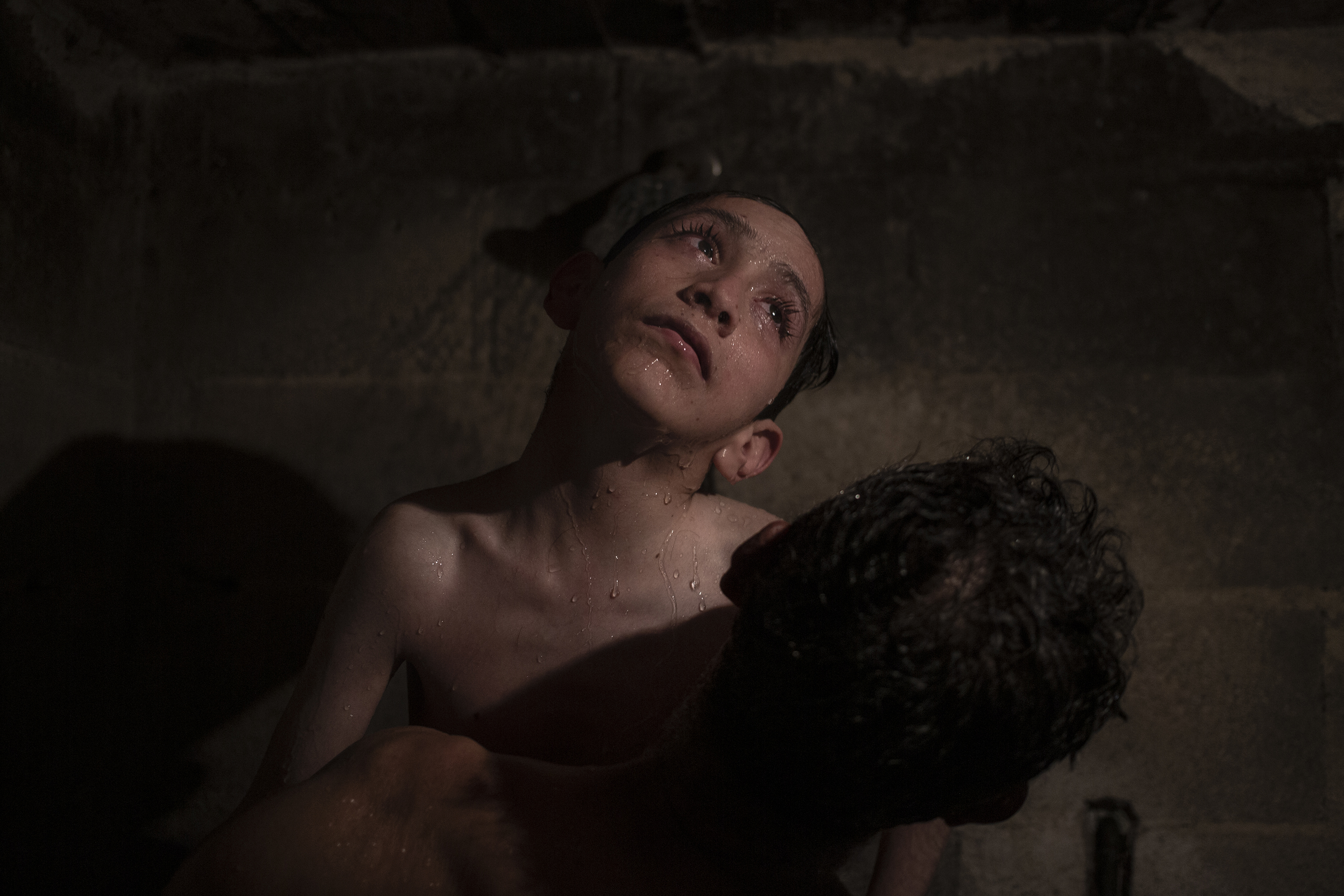We’re streaming daily on Apple Podcasts, Google Podcasts, Stitcher, Pocket Casts, and Spotify! You can also listen to it right here on The Phoblographer.
“Sebastián’s father told me that when he was born, the doctors told him that his life expectancy would be a maximum of five years,” photojournalist Cristopher Rogel Blanquet tells me. “This year, he turns 19.” Blanquet met Sebastián and his family while covering the human cost of agrochemical use in Villa Guerrero, Mexico, where 70% of the population works in the flower industry. Born with hydrocephalus, Sebastián is one of several people in the community who will have to contend with health issues for the rest of their lives. His family believes his condition is the result of long-term exposure to pesticides in the flower fields.
Want to get your work featured? Here’s how to do it!
“In Villa Guerrero, the smell of the chemicals spills into the streets and is strongest on Saturdays– the day they normally do the fumigation,” the photographer remembers. “When I entered the fields during fumigation, I protected myself with face masks and two layers of clothing with long sleeves. When I finished, Doña Petra, Sebastián’s mother, told me that I had to bathe because I could get dizzy or experience vomiting.” Grown to look flawless, without any marks or blemishes, many of these flowers are destined for the United States.
During his time in Villa Guerrero, Blanquet stayed with Sebastián, his mother Doña Petra, and his dad Don Tino, who works in the flower industry. “Don Tino says that Sebastián has lived so many years beyond his life expectancy because they did not abandon him,” the photojournalist says. “His parents love him. Everything revolves around Sebastián. His aunts and uncles, who live next door, meet at Sebastián’s house for dinner every day. His mother sang to him while she fed him. When she sang to him, he was happy.”
Sadly, Doña Petra passed away at the beginning of this year, leaving only Don Tino and Sebastián at home. Blanquet remains in touch with the family, and he continues to return to Villa Guerrero to tell the stories of the people who’ve been affected by agrochemical use in the area. His long-term project, titled Beautiful Poison, was recently named as a finalist in the 42nd annual W. Eugene Smith Grant for Humanistic Photography, presented to photographers whose work follows in the compassionate tradition of W. Eugene Smith’s lifelong body of work. We asked Blanquet to tell us more about his time in Villa Guerrero.
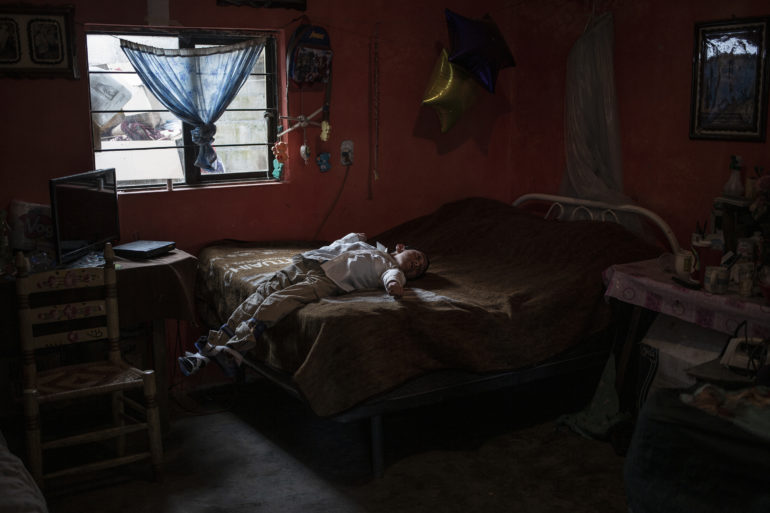
The Essential Gear of Cristopher Rogel Blanquet:
Blanquet tells us,
“I use the Canon 5D Mark III with a 40mm 2.8 lens. I used this lens because it is more discreet and brighter. After a while, it goes unnoticed, unlike larger optics like the 70-200 or the 24-70. Also, the fact that all my work is done with a single lens allows all the photos to be consistent in compositional terms.”
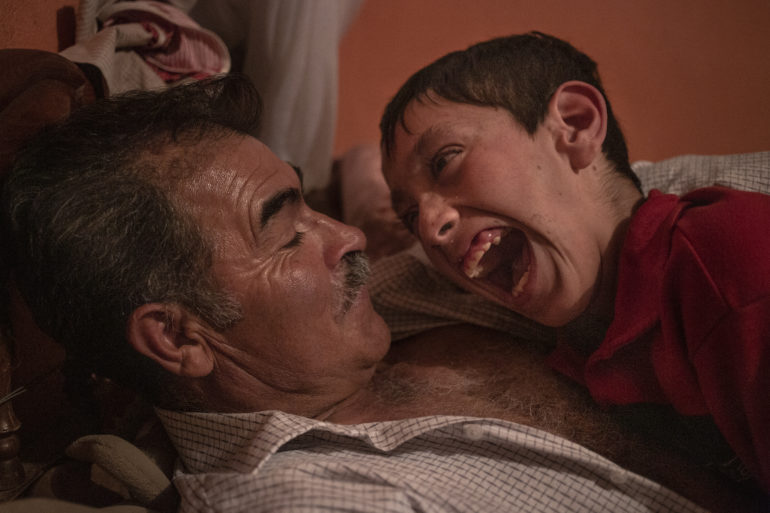
Phoblographer: While working on this project, you met Sebastián, an eighteen-year-old born with hydrocephalus. Why do you think he and his family trusted you to tell their story?
Cristopher Rogel Blanquet: I will tell you a little about my approach to the subject. At the end of 2019, I went to the Reuters offices in Mexico to speak with the editor and show her my work. During the talk, she told me that the theme for 2020 would be climate change, and she recommended I do a report that was related to the environment. This was shortly before the start of the pandemic.
I have known about the problem of congenital malformations in the Villa Guerrero region due to the cultivation of flowers for years. The recommendation of Claudia Daut, the Reuters editor, served as a trigger for me to begin documenting the issue. As I began to investigate studies done on the subject, I found one that a researcher from the Autonomous University of the State of Mexico carried out. He discussed the problem, the causes, and the multiple ailments, Spina Bifida, Hydrocephalus, and tumors among them.
During this investigation, I found out about Sebastián’s case and looked for a way to contact his family. First, I managed to contact a person who lived in Villa Guerrero and knew Sebastián’s parents. I explained what I wanted to do and that I was interested in meeting Sebastián’s family. A couple of months after that talk, he gave me the telephone number of Sebastián’s parents, and I was able to talk to them.
Doña Petra, Sebastián’s mother, would periodically come to Mexico City to receive medical treatment, and it was in Mexico City where I first met Sebastián’s parents. I talked with them and told them what I wanted to do and why I was interested in telling his story. They were very receptive, and in less than a month, I was at their house.
I lived with them for a week, and they welcomed me as one of the family. There, I met Sebastián. His mother introduced him to me and told him that I had come to see him. Sebastian looked at me. I still hadn’t got my camera out yet at that point. Interactions with Sebastian’s family felt natural from the start.
Doña Petra and Don Tino opened their house to me and gave me access to their life without filters. They told me that they have been cultivating flowers all their lives and that before Sebastián, Doña Petra had two failed pregnancies. Doña Petra died recently. Because of the pandemic, all the hospitals in Mexico City gave priority to COVID care and put other ailments on hold. Doña Petra had kidney problems and could not be treated. She lost her life in early 2021.
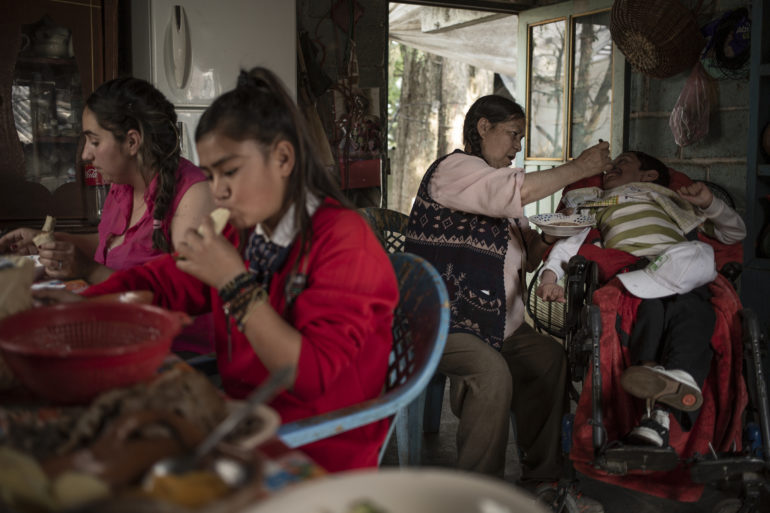
Phoblographer: How have the people in Villa Guerrero been affected by the pandemic?
Cristopher Rogel Blanquet: Villa Guerrero is a small community. The medical infrastructure is not the same as in the city. COVID cases are treated at the closest hospital in the town of Tenancingo.
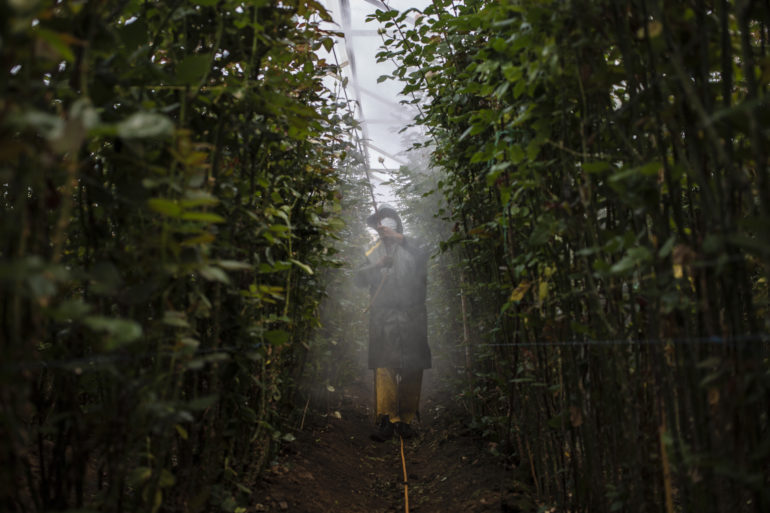
Phoblographer: You stayed at Sebastián’s house for some time. Can you tell us a bit more about him? What are his interests? His dreams?
Cristopher Rogel Blanquet: Whenever I go to Villa Guerrero to continue my project, I stay at Sebastián’s house. It is a small family, of a lower class, and they live in the countryside, from the cultivation of flowers. They always have. As for his interests or dreams, unfortunately, I do not know. Sebastián cannot speak; he only communicates with gestures.
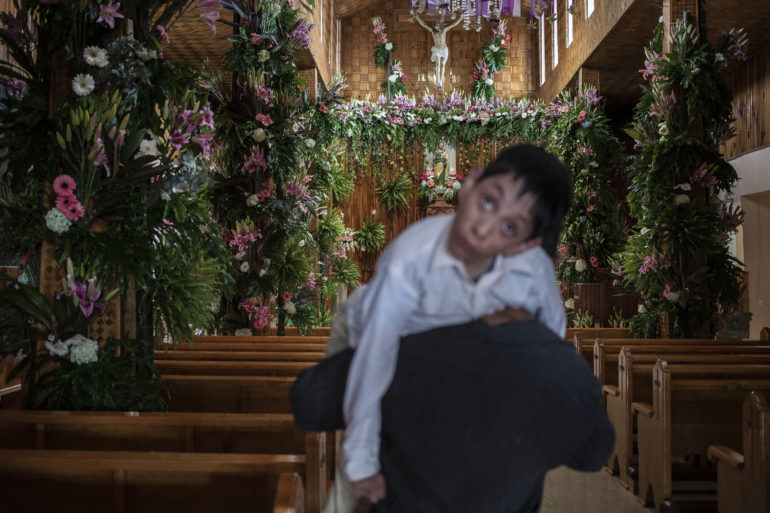
Phoblographer: Can you tell us about the history of this unrestricted agrochemical use in Villa Guerrero? For how long has this been happening?
Cristopher Rogel Blanquet: The vapors of the agrochemicals, prevalent throughout the streets of Villa Guerrero, cause serious damage if inhaled in sufficient amounts. Medical studies of diseases in Mexico’s flower belt have revealed that, because of organophosphate and carbamate pesticides, up to 20% of children born annually present congenital malformations, and 12% of pregnancies result in either miscarriage or stillbirth.
However, these stories of inborn physical disability, chronic disease, limb amputation, and child loss, which interweave into the daily routine and family farming life, remain unaddressed by the local authorities and healthcare system of Villa Guerrero. For decades, the region has not met the demand for specialized medical centers.
The competitive production of Villa Guerrero is a cogwheel in the global billion-dollar flower industry. Farming families realize that the flower industry deprives them of alternative means for economic sustenance; they also understand the danger of being exposed to agrochemicals. The problem is not flower farming but how the flowers are grown. In Villa Guerrero, people’s well-being is cut short, much like flowers sold for ornamental purposes. However, while the use of flowers is ephemeral, their farming involves long-lasting health conditions.
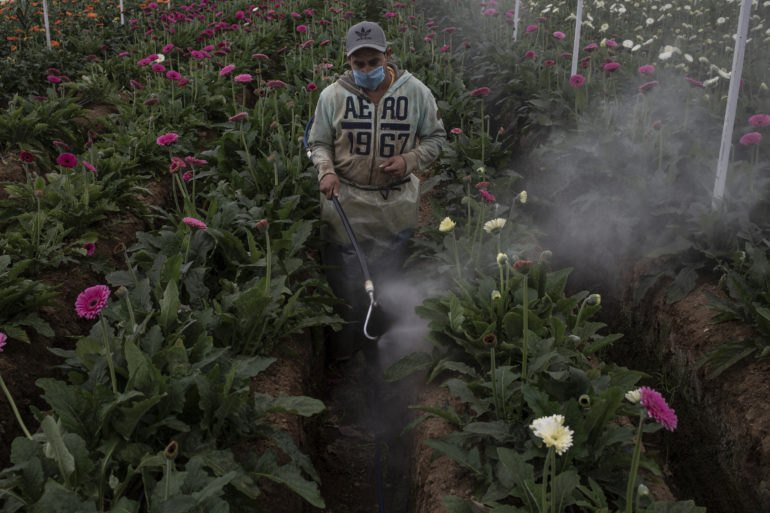
Phoblographer: Why has this problem not yet been addressed by the authorities? And are any non-profits or NGOs stepping in to help?
Cristopher Rogel Blanquet: So far, there are no public policies that address the problem in the region. The most there is are designated containers, where the population goes to dispose of toxic waste after fumigating their land. In 2018, an organization called Los Guerreros Verdes put the issue in the public eye, but the authorities still did not intervene.
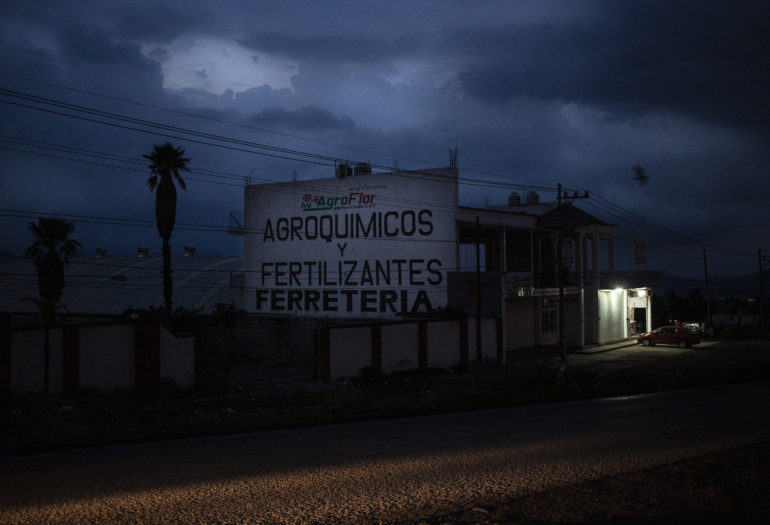
Phoblographer: Was it frustrating or difficult for you emotionally to work on this project, especially knowing that the authorities weren’t helping? What has motivated you to persist and continue this work, even in the face of that frustration?
Cristopher Rogel Blanquet: As I said before, I knew about the subject before I started documenting it. But being up close and intimate allowed me to have another perspective on what lies behind an industry as big as this one. The base of this pyramid is made up of people who have been exposed to agrochemicals for a lifetime. All to have better and better flowers: more resistant, more beautiful. Beautiful flowers.
Being with Sebastián was to realize that this problem has a face. It has many faces because it is not only Sebastián. It is his entire family nucleus. Doña Petra died at the beginning of this year. Now the father has to divide his time to take care of Sebastián, but if he dies, what will happen to the child? On the other hand, what will happen when Don Tino gets older and needs to be taken care of? We are talking about a collapsed family structure. This affects many people.
What motivates me to continue this work is making this problem visible. To clarify, I am not against the cultivation of flowers. I understand that it is an industry that feeds thousands of people. I intend to make the problem visible so that the processes can be changed, in all directions. I do it so that the government regulates and prohibits the use of agrochemicals, so that the community considers organic alternatives in its production processes, and so that consumers understand that behind the perfect flower, there are people with congenital problems due to the use of agrochemicals.
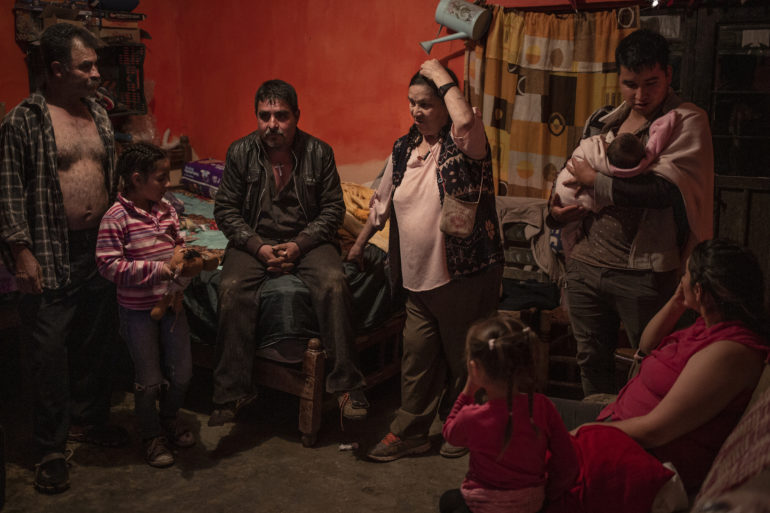
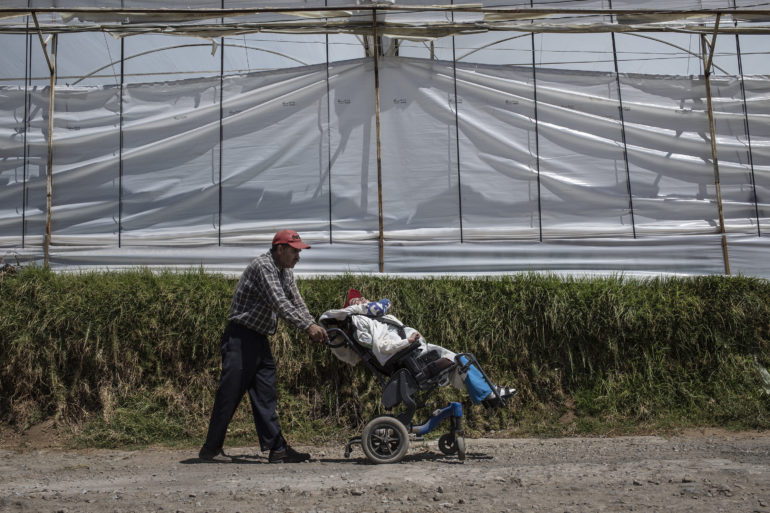
Phoblographer: How does it feel to have this project recognized as part of the shortlist for the 2021 W. Eugene Smith Fund Grants? What hopes do you have for this project as it gains more momentum and helps raise more awareness?
Cristopher Rogel Blanquet: It’s an honor. People I admire are among the recipients of the Eugene Smith grant, and to be honest, I don’t believe it. But it is also a great responsibility that I take on with pleasure to continue with my work. I’m interested in telling stories that I wish didn’t exist, like that of Sebastián, a little boy who has been sick for a lifetime due to agrochemicals.
Getting the support of the Eugene Smith Scholarship means finishing the project faster and continuing with two more stories. The next step is telling the stories of women I have close relationships with who have infertility problems.
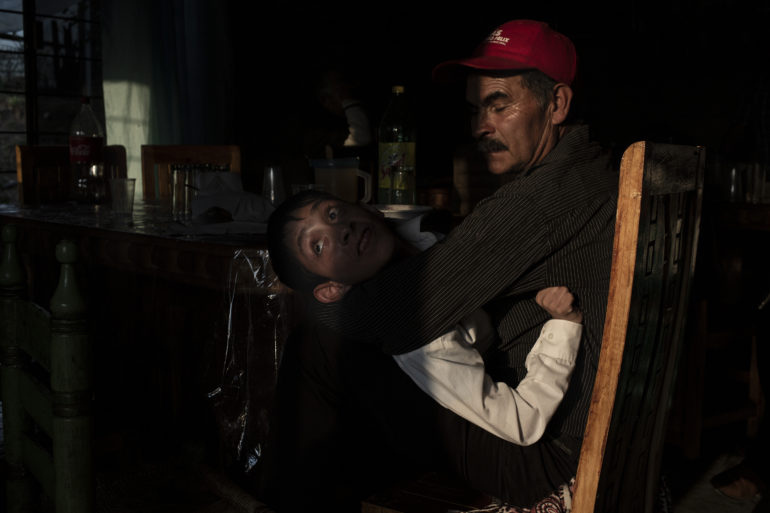
Phoblographer: What first inspired you to become a photojournalist, and how did you get your start? In what ways, if any, has this project reaffirmed or strengthened your dedication to telling untold or overlooked stories?
Cristopher Rogel Blanquet: It was at an exhibition for World Press Photo of the Year that an image hit me, and I fell in love. At that moment, I decided that I wanted to be a photographer. I was a reporter at the time, so I took photos, but my main activity was writing.
That was when I decided to photograph professionally, but my mother worked for a long time selling photographic equipment in Mexico City. One of the first gifts I received from her during my childhood was a 35mm camera. I was taking photos of everything that crossed my path: family gatherings, trees, animals, whatever. Of course, this was without any technical knowledge or ambition for the future. I just liked it. Time passed, and I stopped playing with that camera my mother gave me.
Years later, I would find myself in love with photographs and how I could capture stories through them. After reflecting on all this, I came to the conclusion that the love for photography did not come from that World Press Photo exhibition. It came from my childhood, hand in hand with my mother. I just didn’t know it yet.
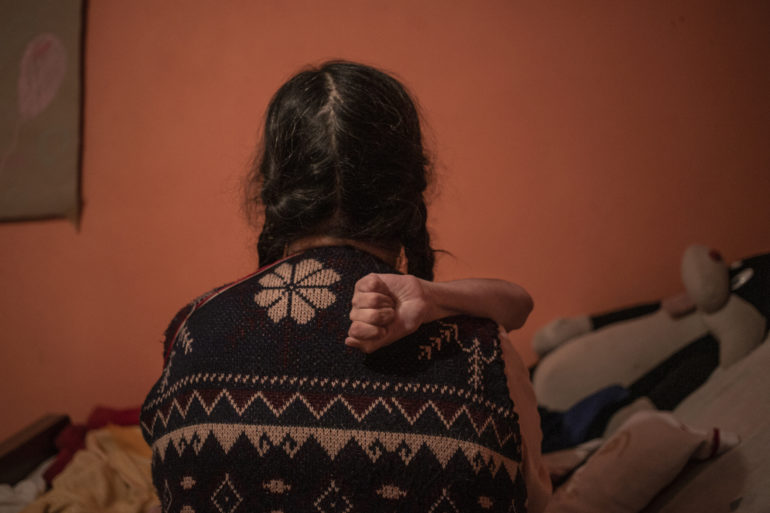
All photos by Cristopher Rogel Blanquet. Used with permission. To learn more about Beautiful Poison, visit the photographer’s website. Follow along on Instagram at rogelblanquet. Learn more about the W. Eugene Smith Grant in Humanistic Photography via their website, or read about the finalists here.


